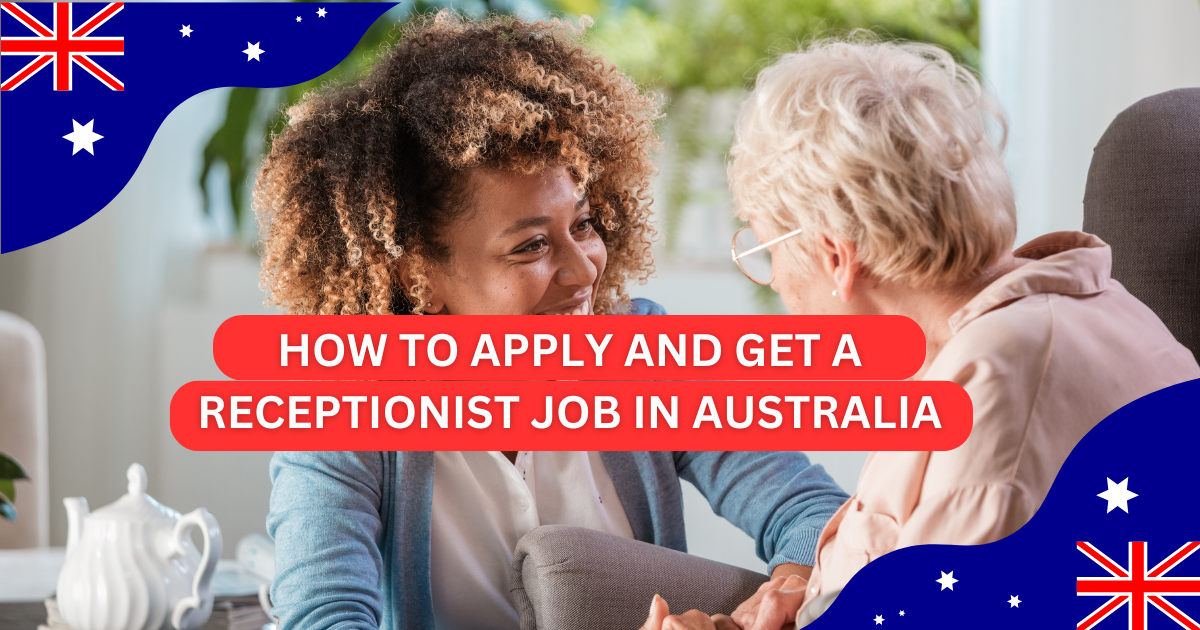When looking for overseas career prospects, professionals are drawn to Australia. A great standard of life, lively culture, and diversified economy have many people itching to relocate. On the other hand, a work visa is required to work lawfully in Australia.
This piece will detail how to apply for and get an Australian work visa and will offer a thorough how-to guide that covers everything from comprehending visa kinds to navigating the application procedure for obtaining an Australian work visa.
Australia provides a range of work visa options, each tailored to individual requirements and circumstances. Among the primary categories are:
1. Visa for Temporary Work Shortage
Employers in Australia can sponsor skilled foreign workers to fill labour shortages by using the Temporary Skill Shortage (TSS) visa. Depending on the occupation, there are two streams for this visa: the Medium-Term stream (up to four years) and the Short-Term stream (up to two years).
2. Independent Skilled Visa
For those without an employer’s sponsorship who have abilities that are in demand in Australia, there is the Skilled Independent visa. Based on their qualifications and talents, candidates will be invited to apply after submitting an Expression of Interest (EOI).
3. Scheme for Employer Nomination
Skilled individuals who are nominated by their company can live and work permanently in Australia under the company Nomination Scheme (ENS) visa. There are two streams for this visa: the Temporary Resident Transition stream is for people who have had a TSS visa for at least three years, and the Direct Entry stream is for people who have never worked in Australia.
4. Visa for Skilled Nominee
The state or territory government must nominate a candidate for the Skilled Nominated visa, much like for the 189 visa. Skilled workers can live and work continuously in Australia with this visa, boosting the national economy.
5. Visa for Working Vacations
Young people between the ages of 18 and 30 (or 35 in some countries) who want to visit and work in Australia for up to a year are the target audience for the Working Holiday visa. Temporary employment is permitted while travelling the nation with this visa.
Qualification Standards
A piece on how to apply for and get an Australian work visa will not be complete if you don’t know the qualification standards. Comprehending the qualifying requirements is essential for a prosperous visa application. Visa types have different requirements, however, some typical ones are as follows:
• Evaluation of Skills
A skills evaluation is typically required for work visas to confirm that your education and experience align with Australian requirements. The purpose of this assessment is to verify that candidates have the abilities required for the occupation they have chosen. It is carried out by the appropriate assessing authority.
• Language Ability
English language proficiency is usually required for work permits in Australia. The majority of applicants must use standardized examinations, like the Pearson Test of English (PTE) or the International English Language Testing System (IELTS), to establish their language proficiency. Language Ability English language proficiency is usually required for work permits in Australia. The majority of applicants must use standardized examinations, like the Pearson Test of English (PTE) or the International English Language Testing System (IELTS), to establish their language proficiency.
• Examinations of Character and Health
To verify that they meet the standards for both character and health, all visa applicants must submit police clearance certificates and pass health examinations.
The Application Process
Although navigating the application process can be difficult, it can be made easier by breaking it down into smaller, more manageable tasks.
1: Look Up and Select the Appropriate Visa Investigate the many kinds of work visas that are offered first. Which visa is best for you will depend on your circumstances, skills, and certifications. Every type of visa has distinct requirements and processing periods.
2: Assemble the necessary paperwork
Gather all the information needed to support your application. Typical documents consist of:
– Identity documents: birth certificate and passport.
– Skills evaluation: Proof of your education and professional background.
– Employment references are letters that describe your positions and responsibilities from prior employers.
– Results of your English proficiency test: Make that the score you received meets the requirements for the visa you have selected.
3: Send in your Expression of Interest (EOI)
You have to use the SkillSelect system to file an EOI for some types of visas. Through this online platform, you can let the government know that you are interested in applying for a visa and provide details about your qualifications, job history, and skill set.
4: Receive the Invitation to Apply (ITA)
You will receive an Invitation to Apply (ITA) for a visa if your EOI is accepted. You must reply to the invitation within the allotted time, which is often sixty days.
5: Submit a Visa Application You can submit your visa application as soon as you obtain your ITA. By using the Department of Home Affairs website, this can be completed online. Make sure all of the information is correct and comprehensive because mistakes can cause delays or rejection. Pay the application fee (varies according to the type of visa).
6: Character and Health Examinations
You might be required to submit medical examinations and police clearance certifications after completing your application. These examinations make sure you fulfil the moral and physical standards needed to be granted a visa.
7: Watch for a Resolution
You will have to wait for a response when your application and any necessary checks are finished. Depending on the type of visa and the specific situation, processing periods can differ significantly. Check your application’s status frequently using your ImmiAccount on the Department of Home Affairs website.
Some tips regarding a Winning Application
1. Precise Records Make sure every document is true and comprehensive. Missing or inconsistent information may cause processing to be delayed or rejected.
2. Look for Expert Assistance If you feel that the process is too much to handle, think about speaking with a registered migration agency. They can guarantee that your application satisfies all standards and offer insightful advice.
3. Get ready for the interview Interviews may be necessary for some visa applications. Examine your application carefully, and be prepared to go over your credentials and job history.
4. Strategies for Networking and Job Search
Look for work opportunities in Australia proactively. You can increase your chances of landing a sponsor by attending business events or networking on sites like LinkedIn. It is critical to comprehend the terms of your work visa after you obtain one. Typical circumstances could be:
– Work restrictions: Certain visas have limitations on the kinds of jobs or employers you are allowed to work for.
– Duration: Understand how long the visa is valid as well as the requirements for extending or renewing it.
If you want the process of how to apply and get an Australian work visa to be easier for you, then getting ready to relocate should be part of your plans.
To ensure a seamless transition to Australian life, preparation is essential. Think about taking these actions:
a. Housing: After arriving, look into available temporary housing choices.
b. Employment: While getting ready for your move, keep networking and looking for jobs.
c. Community resources: Become acquainted with neighbourhood organizations and services that can help you settle in.
Typical Problems and Their Solutions
1. Rejecting visas Applications for visas may be denied for several reasons, such as inadequate supporting evidence or not meeting eligibility requirements. If your application is rejected, carefully read the reasons given and think about resubmitting with more convincing proof or getting help from an expert.
2. Prolonged Processing Durations There can be fluctuations in processing timeframes. Monitor the status of your application and the current processing times on the Department of Home Affairs website to help you set realistic expectations.
3. Cultural Adaptation Relocating to a new nation might be difficult. To make the adjustment easier, interact with locals, take part in social gatherings, and think about joining expat organizations.
Conclusion
In conclusion, how to apply and get an Australian work visa is not something you cannot do; the process of applying for an Australian work visa can be challenging but worthwhile. You can improve your chances of approval by being aware of the many types of visas, the qualifying conditions, and the application procedure. Keep yourself organized, ask for help when you need it, and never give up on your goal of relocating to Australia. Your ambition of working in Australia can come true if you put a lot of thought and effort into it.



